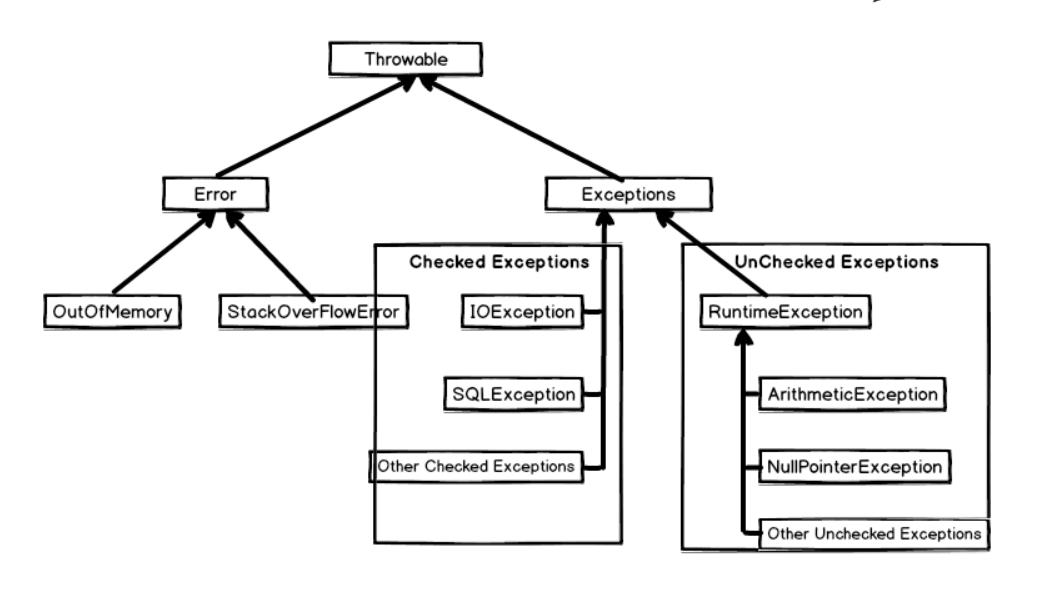Java Throwable Hierarchy
Error
Errors are exceptional scenarios which are out of the scope of application and it is not possible to recover from them.
Checked Exceptions
They are checked at compile time and must be either catched or thrown. Eg: IOException.
Unchecked Exceptions
They are not checked at compile time, also known as RuntimeExceptions. Eg: NullPointerException.
Try
Try is used to enclose the code that might throw an exception. It must be followed by catch or finally.
Catch
Catch is used with try to catch an exception. With java7 we can catch multiple exceptions with one catch block.
Eg:
try{
// IO or SqlException.
} catch (IOException | SqlException e){
e.printStackTrace();
}
Finally
Finally is used with try. The code inside finally is always executed, even on return or an exception. It is used to freeup resources.
Throw
Throw keyword is used to throw an exception.
public void method(){
throw new RuntimeException();
}
Throws
Throws is used to propogate an exception from a method.
public void someMethod() throws Exception1, Exception2{
}
If an exception is thrown inside both try and finally, then the finally exception will be propogated and try exception will be suppressed.
With Java7 we can use getSuppressed to get suppressed exceptions. In case of try-with-resources , suppressed exception will be automatically added otherwise we will have to manually add it.
Throwable.getSupressed(); // Returns Throwable[]
Throwable.addSupressed(aThrowable);
Try-With-Resources (Java 7)
try(FileInputStream input = new FileInputStream("..");
BufferedInputStream bis = new BufferedInputStream(input)){
int data = bis.read();
}
After executing try-with-resources, input and bis will close automatically. All the classes implementing AutoClosable can be used with try-with-resource. No need to use finally.
If an exception is thrown from both try-with-resource block and close method, then the exception of try-with-resource will be propogated and close exception will be suppressed. This is opposite of try-finally.
